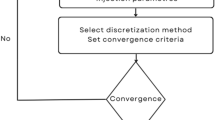Abstract
This study investigated the spray and combustion characteristics of a direct injection spark ignition type system based on the changes in the temperature of the blended fuel (with bio-ethanol and gasoline). The test was performed in a chamber with a constant volume. The diameter and width of the chamber were 86 mm and 39 mm, respectively. The bio-ethanol test fuel was blended at volume ratios of 0 %, 10 %, 20 % and 100 %. The temperature of the fuel was set as −7, 25 and 35 °C. The fuel injection pressure and ambient pressure were set as 4.5 and 0.5 MPa, respectively. The shape and characteristics of the spray were investigated through a spray experiment. The increase in the fuel temperature changed its density and viscosity; this in turn increased spray penetration and spray area and increased the bio-ethanol blending ratio. The combustion visualization and experimental analysis indicated that the decrease in the fuel temperature and the increase in the bio-ethanol blending ratio led to the high viscosity and low heating value. This resulted in an increase in the ignition delay and a decrease in the rate of heat release. It is necessary to adjust the spray strategy and ignition timing to adopt bio-ethanol blended fuel as an alternative fuel.
Similar content being viewed by others
References
KAEC, Introduction to automotive environment, Munundang, Seoul, Korea (2000).
Y. S. Kim, Biomass energy in the USA: A literature review (3)-bio-ethanol production from biomass and feedstock supply, KSWST, Seoul, Korea, 5 (2007).
E. Kasseris and J. Heywood, Charge cooling effects on knock limits in SI DI engines using gasoline/ethanol blends: Part 1-quantifying charge cooling, SAE Technical Paper 2012-01-1275 (2012).
T. Wallner and R. Frazee, Study of regulated and nonregulated emissions from combustion of gasoline, alcohol fuels and their blends in a DI-SI engine, SAE Technical Paper 2010-01-1571 (2010).
E. Kasseris and J. Heywood, Charge cooling effects on knock limits in SI DI engines using gasoline/ethanol blends: Part 2-effective octane numbers, SAE Int. J. Fuels Lubr., 5 (2) (2012) 844–854.
S. Y. No, Atomization characteristics of GDI engine, Journal of the Korean Society of Automotive Engineers, 20 (6) (2000) 22–29.
M. Crane, R. Thring, D. Podnar and L. Dodge, Reduced cold-start emissions using rapid exhaust port oxidation (REPO) in a spark-ignition engine, SAE Technical Paper 970264 (1997).
K. B. Kim et al., A study if injection and combustion characteristics on gasoline direct injection in constant volume chamber, Journal of ILASS-Korea, 17 (3) (2012) 113–120.
G. Y. Park et al., An experimental study on spray characteristic according to fuel, Journal of ILASS-Korea, 19 (3) (2014) 115–122.
N. H. Kim et al., The study on the effect of fuel properties on the spray characteristics of multi-hole injector, KSAE 2010 Annual Conference (2010) 419–425.
A. F. Kheiralla et al., Experimental determination of fuel properties of ethanol/gasoline blends as bio-fuel for SI engines, 2012 ICMAR (2012) 244–249.
S. W. Lee et al., An experimental study on spray characteristics of directly injected bio-ethanol blended fuel by varying fuel temperature, Trans. of the Korean Hydrogen and New Energy Society, 25 (6) (2014) 636–642.
H. C. Oh et al., Study on stratified combustion process and PM emission charactoeristics in a DISI engine using natural flame lumunosity visualization, KSAE 2010 Annual Conference (2012) 139–148.
Author information
Authors and Affiliations
Corresponding author
Additional information
Recommended by Associate Editor Jeong Park
Gi-Young Park received his B.S. in Mechanical Engineering in 2010 from Soonchunhyang University and will receive his M.S. in automotive engineering in 2012 from Kookmin University. He is a ABD Researcher at green power laboratory and his main research interest is in internal combustion engines.
Seang-Wock Lee received his B.S. and M.S. in Mechanical Engineering in 1996 and 1998 from Kookmin University, and then the Ph.D. in 2003 from Waseda University. He is a Professor at Kookmin University in Seoul, Korea. His research interests are in thermal dynamics, internal combustion engines and alternative fuel engines.
Rights and permissions
About this article
Cite this article
Park, GY., Kang, SH. & Lee, SW. An experimental study on spray and combustion characteristics based on fuel temperature of direct injection bio-ethanol-gasoline blending fuel. J Mech Sci Technol 30, 5239–5246 (2016). https://doi.org/10.1007/s12206-016-1042-4
Received:
Revised:
Accepted:
Published:
Issue Date:
DOI: https://doi.org/10.1007/s12206-016-1042-4



